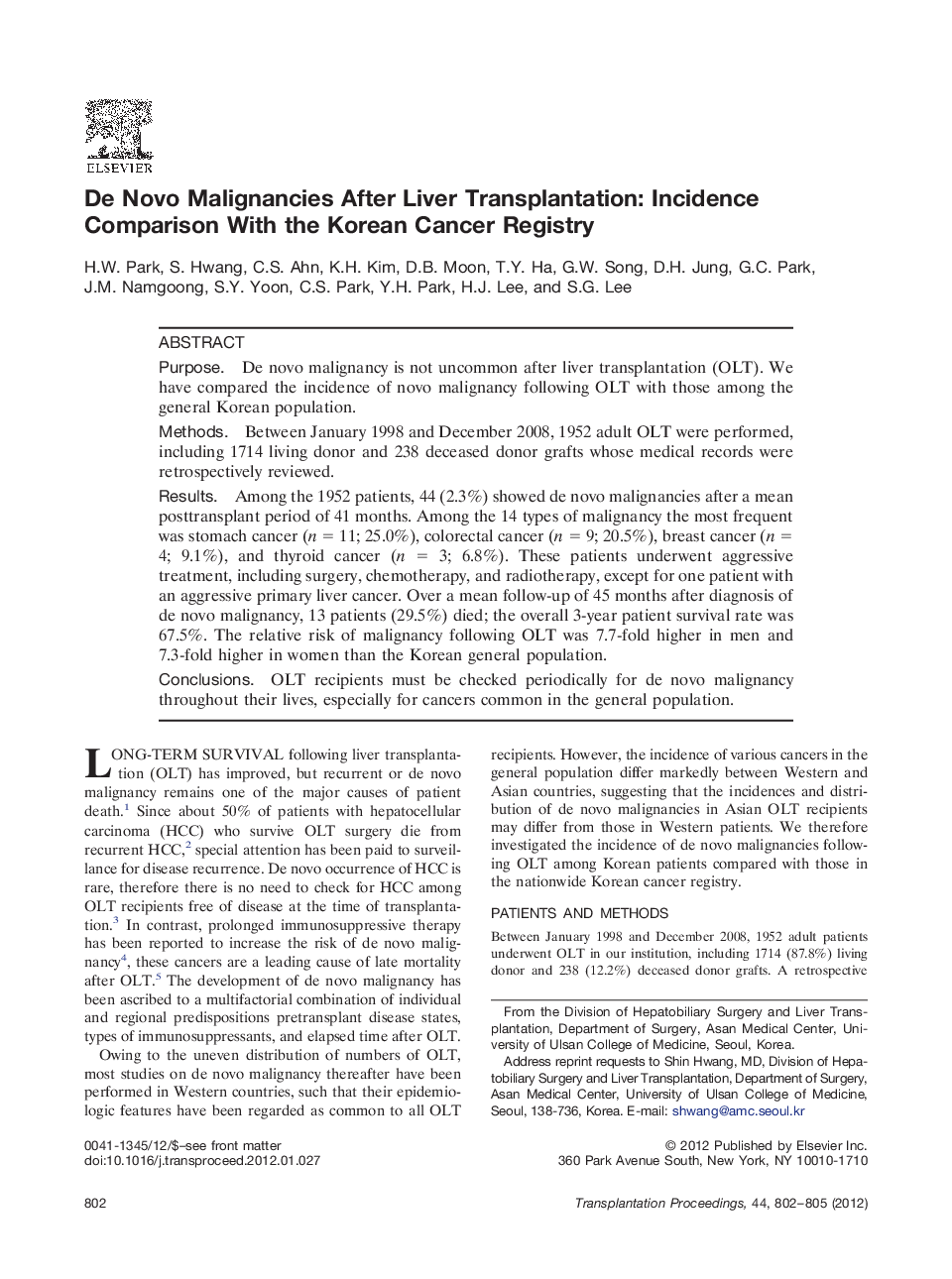| Article ID | Journal | Published Year | Pages | File Type |
|---|---|---|---|---|
| 4257801 | Transplantation Proceedings | 2012 | 4 Pages |
PurposeDe novo malignancy is not uncommon after liver transplantation (OLT). We have compared the incidence of novo malignancy following OLT with those among the general Korean population.MethodsBetween January 1998 and December 2008, 1952 adult OLT were performed, including 1714 living donor and 238 deceased donor grafts whose medical records were retrospectively reviewed.ResultsAmong the 1952 patients, 44 (2.3%) showed de novo malignancies after a mean posttransplant period of 41 months. Among the 14 types of malignancy the most frequent was stomach cancer (n = 11; 25.0%), colorectal cancer (n = 9; 20.5%), breast cancer (n = 4; 9.1%), and thyroid cancer (n = 3; 6.8%). These patients underwent aggressive treatment, including surgery, chemotherapy, and radiotherapy, except for one patient with an aggressive primary liver cancer. Over a mean follow-up of 45 months after diagnosis of de novo malignancy, 13 patients (29.5%) died; the overall 3-year patient survival rate was 67.5%. The relative risk of malignancy following OLT was 7.7-fold higher in men and 7.3-fold higher in women than the Korean general population.ConclusionsOLT recipients must be checked periodically for de novo malignancy throughout their lives, especially for cancers common in the general population.
